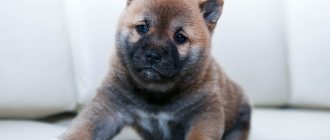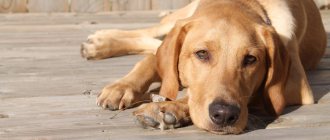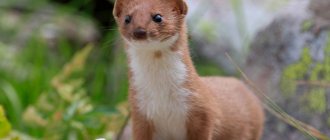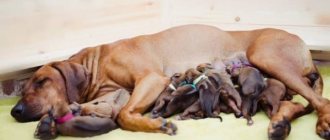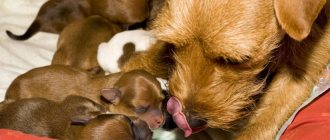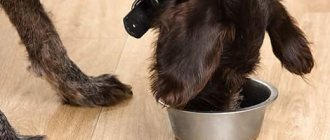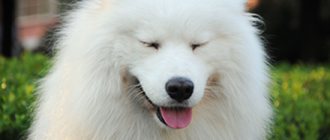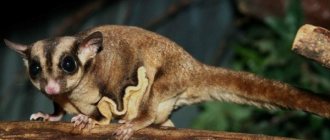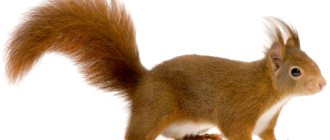On August 19, 1960, the whole country watched with excitement the launch of the second spacecraft-satellite. This excitement had a completely understandable nature: on board were two small dogs who were destined to become the first living beings to make orbital space flight. The next day, general excitement gave way to jubilation: the dogs returned - alive and unharmed.
Belka and Strelka made a great contribution to space exploration - the successful return of the dogs gave confidence that a person can also survive such a flight. Yuri Gagarin went into orbit a little more than six months later. Read about how Belka and Strelka prepared for the flight, behaved in space and lived after their return.
The most enduring
Belka and Strelka had competitors - other dogs could get on board. The special service specifically searched for mongrels - it is believed that they are less whimsical, know what the struggle for life is, and therefore are best suited for an important mission.
The following requirements were imposed on the candidates: weight - up to six kilograms, height - up to 35 centimeters at the withers, age - from two to six years, only females (it is easier for them to arrange a toilet). The color had to be light so they could be seen better on monitor screens. There were 12 dogs left in the final group. Scientists decided that two would go on the trip - the animals feel better and calmer in the company.
"We work for our visitor." Interview with the director of the Museum of CosmonauticsThe first female zoopsychologist. Meet Nadezhda Ladygina-Kots
After a veterinary examination, we began training at the production base of the Air Force Institute of Aviation Medicine. Over several months, the animals were gradually accustomed to long periods of time in a closed space and noise. They were taught to eat from feeding machines and not to tear off the sensors on special suits. The dogs endured high overloads on the centrifuge and vibration stand. Scientists monitored their condition around the clock.
The smartest, quick-witted and hardiest were Vilna (completely light-colored) and Kaplya (with brown spots). One of the scientists who worked with dogs gave them different nicknames. He considered that Belka and Strelka would be more suitable for world fame.
Rats on a ship
This flight was not just a triumphal and “exemplary” flight, and certainly not a “circus act.” First of all, it was a scientific breakthrough. Not only Belka and Strelka went into orbit that morning. They were a kind of commanders of the expedition. A “cheerful company” settled down with them in the ejected part of the ship. 12 mice, insects, plants, fungal cultures, seeds of corn, wheat, peas, onions and even various types of microbes in special containers. All of them were supposed to help find a preliminary answer to the main question: how the human body will behave in space. There were also human skin cells in the “baggage”. Scientists needed to establish how cosmic radiation affects the skin.
Dog work
Belka and Strelka in the Sputnik 5 spacecraft
Photo: TASS
Another 28 mice and two white rats had to sacrifice themselves for the sake of science. They were placed outside the lander and had no chance of survival. The rodents remained in orbit. But the dogs felt quite comfortable during the flight. The dogs were protected from radiation by special lining of the containers.
Starting conditions: legends and truth about Baikonur
How a secret object became famous throughout the world
The friends were seen off on a one-day flight. But supplies of oxygen and food were calculated for eight days - in case the ship failed to leave orbit in time. Everything was done in order to save them in an emergency situation and return them to Earth.
What was this for?
The idea of sending animals, and then humans, into space came to Sergei Korolev back in the 1930s. But the bold idea came to fruition much later; it was preceded by many years of preparation.
In the late 1940s, when the country's rocket industry began to develop rapidly, the topic of human space flight gradually began to come to the fore. Sergei Korolev was then already the chief designer of Special Design Bureau No. 1. Under his leadership, scientists - the best specialists in the country - had to find out whether living beings could survive colossal loads without harm to their health.
Initially, monkeys were supposed to fly into space, but then it turned out that dogs are calmer, more trainable and normal in confined spaces.
How were the first cosmonauts selected?
Soviet scientists spent quite a long time deciding who to send first into outer space. Who do you think was the original contender, being closer to the person? Of course, primates! But the monkeys turned out to be such sensitive creatures because of their developed consciousness that they immediately resisted any danger.
Therefore, sending them into space became a troublesome and hopeless task. There was a very big stake at stake - after all, after the animals, a human flight into space was planned!
Then, based on the results of a biological study, the choice fell on dogs. The first squad of future four-legged cosmonauts appeared in 1951 and consisted exclusively of the “door terrier” breed. Why did simple mongrels make it to the favorites list?
Doctors noted that mongrels, by their nature, are accustomed to surviving, are unpretentious and quickly get used to new, albeit difficult, conditions. So the participation in the space project of too gentle and spoiled representatives of the beautiful breed was immediately put to rest.
As a result of the research, a portrait of an astronaut dog emerged.
- Weight no more than seven kilograms and height no more than 35 centimeters. These dimensions were determined by the parameters of the space capsule.
- The age of the animal must be between 2 and 6 years. Doctors set such boundaries for reasons of still good health and already formed resistance to overload and disease.
- Applicants for space flight had to be sociable and patient, since they had to be trained for a long time before they flew into Earth orbit.
Do you know that?! “Boys” were not included in the coveted list. Not because they are bullies. It’s all a matter of physiology: it’s easier for “girls” to “relieve a dog” in specially tailored sewage suits.
The preparatory squad included dogs with an attractive appearance. Why do they need beauty? The thing is that scientists looked far ahead, because dogs returning back to Earth after the flight will certainly become the subject of cameras and heroes of films, and a popular world-class star must be visually attractive.
Moreover, the color of the animal should be light: firstly, light-haired ones are more convenient to observe on working monitors in flight, and secondly, they will later look more impressive on a black and white television screen.
All twelve who were included in the squad of “elegant, graceful and slender” began to undergo special training:
- they rotated in a centrifuge and shook on a vibration stand,
- ejected
- dressed in special clothing equipped with sensors, they were lonely and bored for a long time in a closed capsule while they were subjected to loads similar to cosmic ones.
No less brave dogs
The flight of Belka and Strelka was preceded by many years of work by scientists with animals. Nine years before this event, male mongrels Desik and Gypsy set off on a suborbital flight. On July 22, 1951, a geophysical rocket with them soared to 87 kilometers 700 meters. After this, the head part with the dogs separated and took the animals back to Earth by parachute. Dezik and Gypsy behaved cheerfully after landing.
Six years later, on November 3, 1957, the second artificial Earth satellite was launched into low-Earth orbit. On board, the first living creature in space in low-Earth orbit is the dog Laika, whose return was not intended. The radio telemetry system constantly monitored her well-being, and this made it possible to draw a conclusion about how the human body would behave under similar conditions. Scientists have received their answers, and then it’s time to think about broader research and observe how animals behave when planted.
“The time will come when a spaceship with people will leave the Earth and go on a journey to distant planets, to distant worlds...” Sergei Korolev wrote in December 1957.
A month before the flight of Belka and Strelka, a tragedy occurred: as a result of an accident on the first stage of the spacecraft, the dogs Chaika and Lisichka were killed. Sergei Korolev especially loved the latter. Many heard how, before putting her into the cabin of the spaceship, he whispered to her: “I want you to come back.” It was decided to equip the next ship after the incident—the one on which Belka and Strelka flew—with an ejection pressurized cabin, which can now be seen in the Museum of Cosmonautics in Moscow.
After the four-legged pioneers, in December of the same year, the dogs Mushka and Pchelka flew into space. But their flight, as in the case of Lisichka and Chaika, ended badly: at the final stage of deorbit, the stabilization system of the braking propulsion system failed, which changed the descent trajectory. The secret facility with the animals risked landing in another country, so it was eliminated. After this unsuccessful flight, chief designer Sergei Korolev said that a person will fly into space only if the next two flights in a row with animals are successful. On March 9, 1961, the dog Chernushka flew into low-Earth orbit, and on March 25, Zvezdochka, which was accompanied on the flight by Yuri Gagarin. Having completed one revolution around the Earth, they landed safely.
Research involving dogs continued after Yuri Gagarin's famous flight. On February 22, 1966, the unmanned spacecraft Kosmos-110 was launched with the dogs Ugolk and Veterok on board. They survived 22 days in a confined space and successfully returned home. Their record-breaking flight showed scientists that such a long stay in weightlessness can lead to functional and structural changes in muscles, bones, and the neurosensory system that are not irreversible - eventually the body will return to normal.
In the Museum of Cosmonautics today you can see the “accessories” of some of these animals, the cabins in which they flew, scientific equipment, a model of the pressurized head of a geophysical rocket, newsreel footage of preparations for flights, and much more. But the main thing is that the stuffed animals of Belka and Strelka themselves are presented here. Everyone's favorites remained in peace and comfort until the end of their lives at the State Research and Testing Institute of Aviation and Space Medicine. Both dogs died at a very old age.
The result of the flight of Belka and Strelka
From a scientific point of view, the flight of astronaut dogs into space was of great importance. Based on the collected data, scientists made sure that human space flight is possible and does not pose a danger to a living organism, but it should be as limited in time as possible. In fact, Strelka approved the possibility of Gagarin's flight into space, and Belka and its restless behavior limited it to one orbit.
Moscow Museum of Cosmonautics
As for the dogs themselves, their lives after the flight continued as normal. Strelka even gave birth to six puppies, one of which Khrushchev presented to Jacqueline Kennedy as a gift. The dogs died a natural death, having lived to an old age. Having become the most popular dogs in the world during their lifetime, after death they took a worthy place in the Moscow Museum of Cosmonautics, where their stuffed animals stand to this day.
